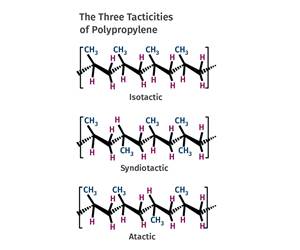All-PE Printed Collation Film Replaces Cardboard for Craft Beer Packs
Berry, Dow collaboration helps boost sales for beer maker while cutting costs and offering more in the way of sustainability, branding and shelf appeal.
Processing giant Berry Global has collaborated with Dow Packaging and Specialty Plastics to produce what’s billed as the first all-PE printed collation shrink-film packaging for a craft-beer brewer in the U.S. The beer maker, Oskar Blues, is using the novel package instead of corrugated cardboard on its 24-can variety cases. It says the switch has resulted in a 300% increase in ´óĎó´«Ă˝, slashed costs, and improved its sustainability, branding and shelf appeal.
The craft-beer market is steadily shifting from glass bottles to cans to cut shipping and manufacturing costs, notes Ed McDonough, technical lead for the project for Berry Global, Evansville, Ind. He notes that the all-PE package is fully recyclable and reusable and has a lower carbon footprint than printed corrugated paperboard. Says McDonough, “I believe that the advantageous economics is married to sustainability, and this market—dominated by millennials—is very much into that.”
Oskar Blues, Longmont, Colo., part of the CANarchy Craft Brewery Collective—the ninth largest craft brewer in the U.S.—launched the new packaging in 2017. Says Jeremy Rudolf, operations manager for CANarchy Craft Brewery Collective, “Moving to collated shrink packaging for our 24-can variety packs results in ´óĎó´«Ă˝ growth, sustainability benefits and strong shelf appeal. Our primary focus is the quality of the beer we brew, but we also continuously evaluate options to evolve in other areas and enhance our sustainability profiles with innovations like this new packaging solution.”
The three-layer blown film furnished by Berry serves as secondary package for the craft brewer. It wraps corrugated trays, replacing previous shrink-wrapping that held two 12-pack cartons together. Like the previous corrugated cardboard package, the film features Oskar Blue’s branding and design, maintaining shelf appeal.
The brewer says the switch has yielded 40% cost savings, reduced usage of secondary packaging by 64%, and has resulted in 73% fewer trucks delivering packaging materials to Oskar Blues. The company expects to see 46% in energy savings and 51% reduction in greenhouse gas emissions based on an environmental-impact assessment by packaging consultancy Allied Development Corp., Burnsville, Minn.
While certain collation films are shifting to five layers, Berry’s McDonough maintains the three-layer structure is sufficient since the application does not require barrier or tie layers. Adds Ritika Kalia, end-use marketing manager at Dow Packaging & Specialty Plastics, Midland, Mich., “Three-layer film is still the predominant technology; however, we are seeing some film converters starting to explore five-layer structures, especially inother geographies such as Europe.”
While McDonough will not reveal the exact PE grades used for this application, he notes that printed shrink film requires low haze, cutability, shrinkability, and sealability. As a result, the layers are all composed of various PE blends, including HDPE and LDPE, L/LLDPE and mLDPE, which is standard industrywide for printed shrink film used for water-bottle packaging.
Berry runs three-layer coextruded blown collation shrink film made of various PE blends to achieve low haze, cuttability, shrinkability, and sealability. Reverse printing on the multilayer film packaging is accomplished with a state-of-the-art 10-station flexographic printer with ECG (Extended Color Gamut) technology, which enables multiple colors from a base of only three colors, for sophisticated artwork that matches the quality of a photograph, according to Markay Doane, Berry Global’s product-line director. He says, “The ability to print on collation shrink film is essential for applications where branding is so important. More and more companies see its potential, given the opportunity to achieve cost and sustainability goals while still capturing consumer attention with strong branding and shelf appeal.”
According to Dow’s Kalia, Oskar Blues’ printed shrink-wrapped mixed case is indeed a first for the U.S. craft-beer industry. “Other arrangements, including four-packs in similar packaging, are becoming common in North America, and printed shrink-wrapped cases are already common in other regions, including Europe and Latin America.” Kalia notes that now that printed shrink packaging is possible, the Dow team believes that more brand owners will move their products to this type of packaging to take advantage of the cost, manufacturing and sustainability benefits.
Related Content
Fundamentals of Polyethylene – Part 6: PE Performance
Don’t assume you know everything there is to know about PE because it’s been around so long. Here is yet another example of how the performance of PE is influenced by molecular weight and density.
Read MoreFundamentals of Polyethylene – Part 5: Metallocenes
How the development of new catalysts—notably metallocenes—paved the way for the development of material grades never before possible.
Read MorePolyethylene Fundamentals – Part 4: Failed HDPE Case Study
Injection molders of small fuel tanks learned the hard way that a very small difference in density — 0.6% — could make a large difference in PE stress-crack resistance.
Read MoreRecycled PE Grades With Up to 100% PCR for Shrink Films
Dow’s new Revoloop grades was a collaboration with European shrink film manufacturer RKW Group.
Read MoreRead Next
Making the Circular Economy a Reality
Driven by brand owner demands and new worldwide legislation, the entire supply chain is working toward the shift to circularity, with some evidence the circular economy has already begun.
Read MoreSee Recyclers Close the Loop on Trade Show Production Scrap at NPE2024
A collaboration between show organizer PLASTICS, recycler CPR and size reduction experts WEIMA and Conair recovered and recycled all production scrap at NPE2024.
Read MoreLead the Conversation, Change the Conversation
Coverage of single-use plastics can be both misleading and demoralizing. Here are 10 tips for changing the perception of the plastics industry at your company and in your community.
Read More












